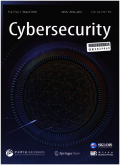- 钛学术文献服务平台 \
- 学术期刊 \
- 工业技术期刊 \
- 自动化技术与计算机技术期刊 \
- 网络空间安全科学与技术(英文版)期刊 \
Conceptualisation of Cyberattack prediction with deep learning
Conceptualisation of Cyberattack prediction with deep learning
基本信息来源于合作网站,原文需代理用户跳转至来源网站获取
摘要:
The state of the cyberspace portends uncertainty for the future Internet and its accelerated number of users.New paradigms add more concerns with big data collected through device sensors divulging large amounts of information,which can be used for targeted attacks.Though a plethora of extant approaches,models and algorithms have provided the basis for cyberattack predictions,there is the need to consider new models and algorithms,which are based on data representations other than task-specific techniques.Deep learning,which is underpinned by representation learning,has found widespread relevance in computer vision,speech recognition,natural language processing,audio recognition,and drug design.However,its non-linear information processing architecture can be adapted towards learning the different data representations of network traffic to classify benign and malicious network packets.In this paper,we model cyberattack prediction as a classification problem.Furthermore,the deep learning architecture was co-opted into a new model using rectified linear units (ReLU) as the activation function in the hidden layers of a deep feed forward neural network.Our approach achieves a greedy layer-by-layer learning process that best represents the features useful for predicting cyberattacks in a dataset of benign and malign traffic.The underlying algorithm of the model also performs feature selection,dimensionality reduction,and clustering at the initial stage,to generate a set of input vectors called hyper-features.The model is evaluated using CLCIDS2017 and UNSW_NB15 datasets on a Python environment test bed.Results obtained from experimentation show that our model demonstrates superior performance over similar models.

推荐文章
Spatial prediction of landslide susceptibility using GIS-based statistical and machine learning mode
Landslide susceptibility mapping
Statistical model
Machine learning model
Four cases
Deep web接口查询能力估计
查询接口
查询能力
Deep Web数据源自动分类
Deep Web
查询接口
朴素贝叶斯分类
一种Deep Web聚焦爬虫爬行策略
结构化Deep Web数据源
聚焦爬虫
决策树分类器
内容分析
关键词云
关键词热度
相关文献总数
(/次)
(/年)
文献信息
| 篇名 | Conceptualisation of Cyberattack prediction with deep learning | ||
| 来源期刊 | 网络空间安全科学与技术(英文版) | 学科 | |
| 关键词 | |||
| 年,卷(期) | 2020,(2) | 所属期刊栏目 | |
| 研究方向 | 页码范围 | 72-85 | |
| 页数 | 14页 | 分类号 | |
| 字数 | 语种 | 英文 | |
| DOI | |||
五维指标
引文网络
引文网络
二级参考文献 (0)
共引文献 (0)
参考文献 (15)
节点文献
引证文献 (0)
同被引文献 (0)
二级引证文献 (0)
2011(1)
- 参考文献(1)
- 二级参考文献(0)
2015(3)
- 参考文献(3)
- 二级参考文献(0)
2016(4)
- 参考文献(4)
- 二级参考文献(0)
2017(2)
- 参考文献(2)
- 二级参考文献(0)
2018(2)
- 参考文献(2)
- 二级参考文献(0)
2019(3)
- 参考文献(3)
- 二级参考文献(0)
2020(0)
- 参考文献(0)
- 二级参考文献(0)
- 引证文献(0)
- 二级引证文献(0)
引文网络交叉学科
相关学者/机构
期刊影响力
网络空间安全科学与技术(英文版)
主办单位:
中国科学院信息工程研究所
出版周期:
季刊
ISSN:
2096-4862
CN:
10-1537/T
开本:
出版地:
邮发代号:
创刊时间:
语种:
eng
出版文献量(篇)
54
总下载数(次)
0
期刊文献
相关文献
推荐文献

 免费查重
免费查重










